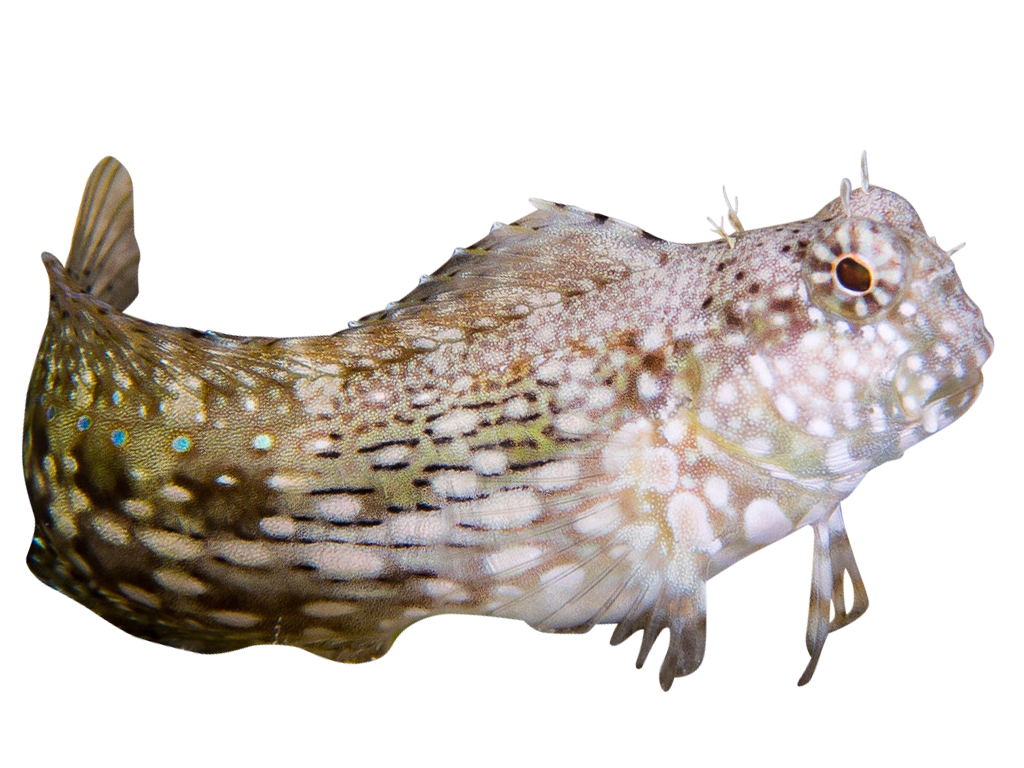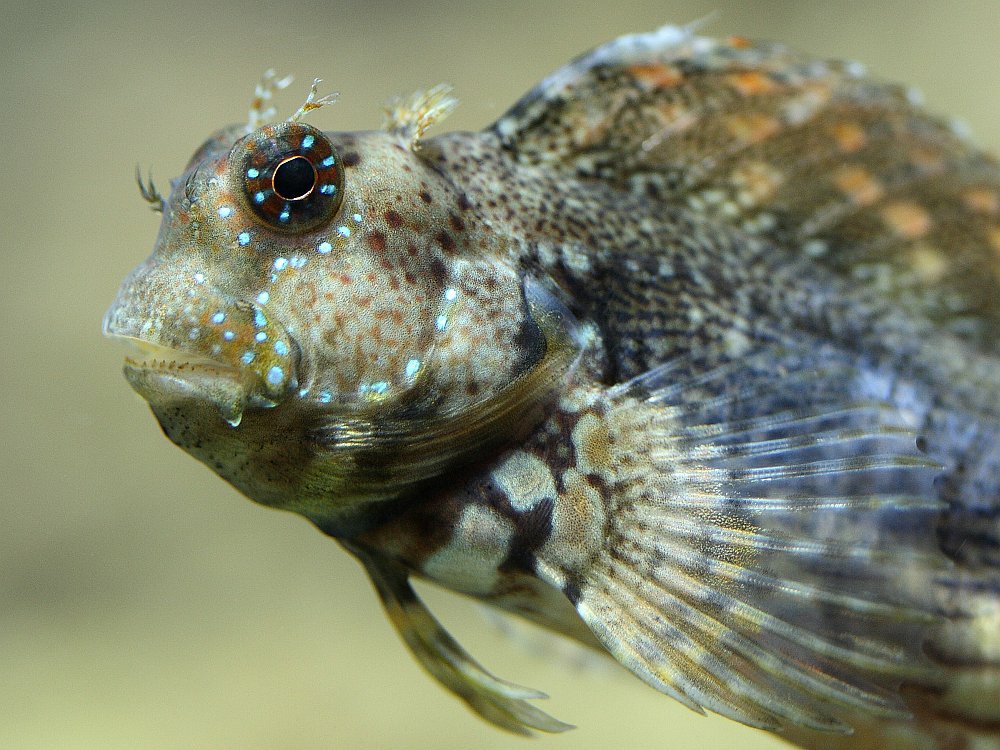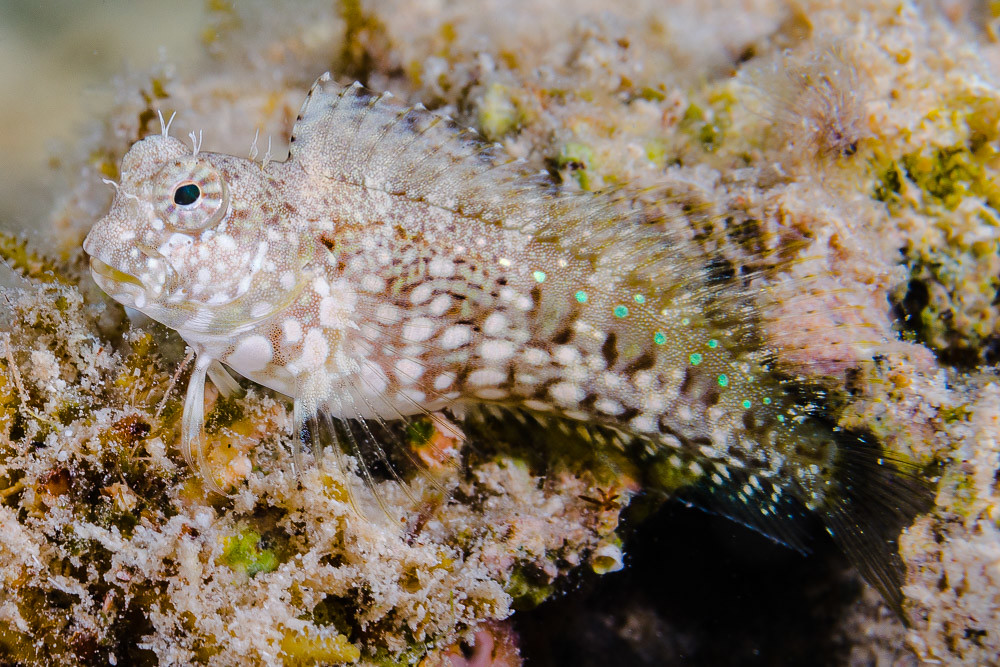Jewelled Blenny
Salarias fasciatus

Eats decayed animals
The jewelled blenny belongs to the combtooth blennies, and the name blenny is derived from a Greek word for ‘mucus’ or ‘slime’. Indeed, the blennies are covered in a thick film of mucus, allowing the fish to survive out of the water for short periods of time.
The jewelled blenny grazes algae, but it also eats faeces and decayed parts of dead animals. The species inhabits coral reefs, often in shallow lagoons and stagnant water, close to sandy bottoms. The fish lives alone or in pairs. Its colour adapts to the environment and the fish can change colour to hide from predators.

Photo: Dirk-Godlinski-CC-BY-SA
The females attach their eggs to plants
Adult male jewelled blennies have an elongated anal fin. They aggressively defend their territory, and outside of the breeding season they are aggressive towards females as well. But during the breeding season, the male develops orange spots on his dorsal fin, and he “dances” in front of the female. He extends his fins and rocks from side to side.
The female lays her eggs so they attach to plants growing on rocks or directly from the bottom, and the male fertilises the eggs there. The species is a popular aquarium fish that likes to graze algae from the tank decorations and glass.

Photo: zsispeo-CC-BY-NC-SA
Distribution worldwide

From East Africa to Indonesia, Fiji, the Solomon Islands, south of the Great Barrier Reef.
Threat based on the Red List

Trade regulations
CITES: Not listed.